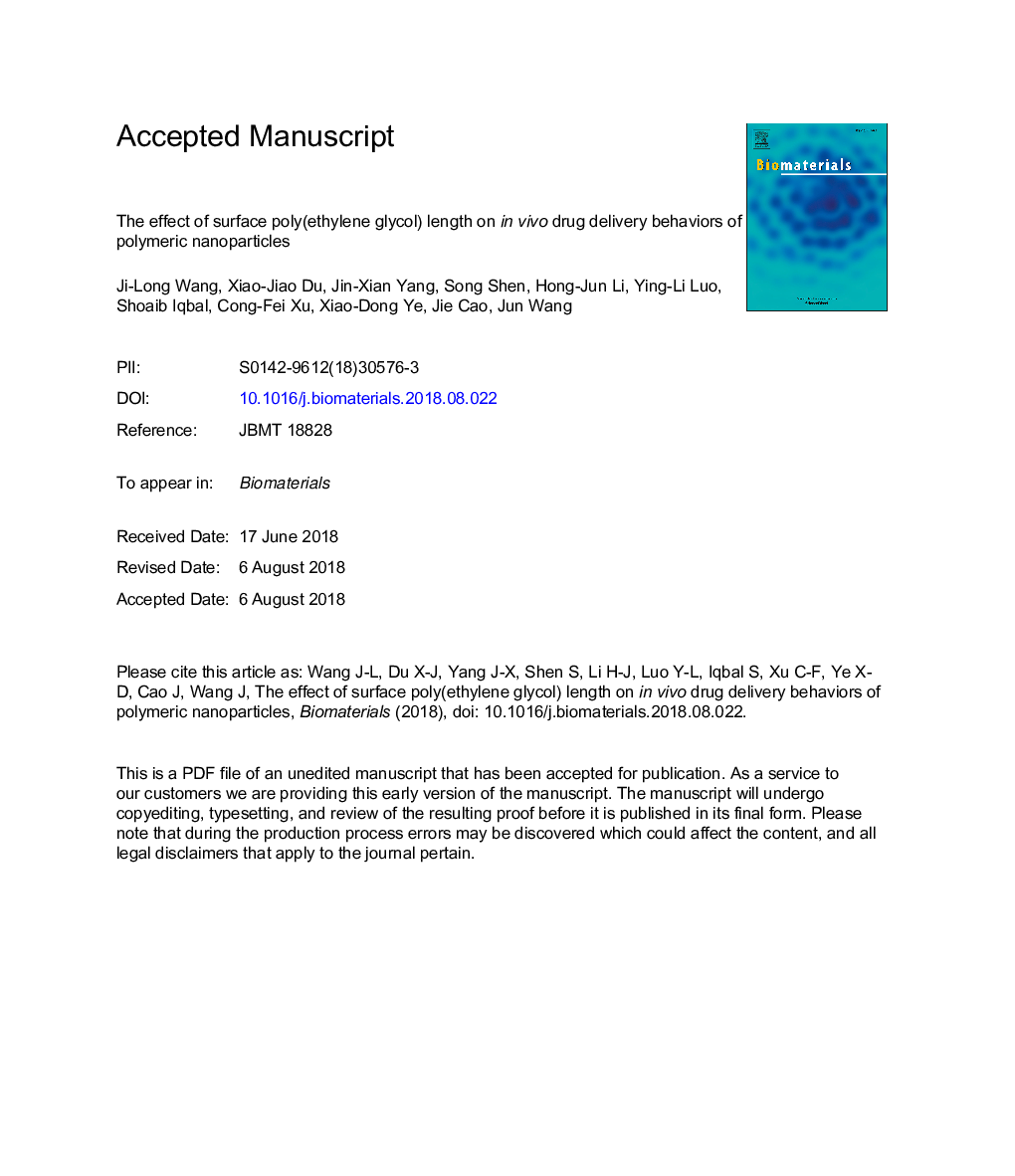| Article ID | Journal | Published Year | Pages | File Type |
|---|---|---|---|---|
| 6484289 | Biomaterials | 2018 | 35 Pages |
Abstract
Engineering nanoparticles of reasonable surface poly(ethylene glycol) (PEG) length is important for designing efficient drug delivery systems. Eliminating the disturbance by other nanoproperties, such as size, PEG density, etc., is crucial for systemically investigating the impact of surface PEG length on the biological behavior of nanoparticles. In the present study, nanoparticles with different surface PEG length but similar other nanoproperties were prepared by using poly(ethylene glycol)-block-poly(ε-caprolactone) (PEG-b-PCL) copolymers of different molecular weights and incorporating different contents of PCL3500 homopolymer. The molecular weight of PEG block in PEG-PCL was between 3400 and 8000â¯Da, the sizes of nanoparticles were around 100â¯nm, the terminal PEG density was controlled at 0.4 PEG/nm2 (or the frontal PEG density was controlled at 0.16 PEG/nm2). Using these nanoproperties well-designed nanoparticles, we demonstrated PEG length-dependent changes in the biological behaviors of nanoparticles and exhibited nonmonotonic improvements as the PEG molecular weight increased from 3400 to 8000â¯Da. Moreover, under the experimental conditions, we found nanoparticles with a surface PEG length of 13.8â¯nmâ¯(MWâ¯=â¯5000â¯Da) significantly decreased the absorption with serum protein and interaction with macrophages, which led to prolonged blood circulation time, enhanced tumor accumulation and improved antitumor efficacy. The present study will help to establish a relatively precise relationship between surface PEG length and the in vivo behavior of nanoparticles.
Related Topics
Physical Sciences and Engineering
Chemical Engineering
Bioengineering
Authors
Ji-Long Wang, Xiao-Jiao Du, Jin-Xian Yang, Song Shen, Hong-Jun Li, Ying-Li Luo, Shoaib Iqbal, Cong-Fei Xu, Xiao-Dong Ye, Jie Cao, Jun Wang,
